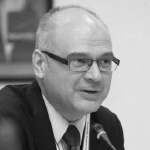Wojciech Kuta, editor-in-chief of Rynek Zdrowia, a leading Polish healthcare publication, discusses the interacting dynamics of the obstacles facing Polish healthcare, as the country aims to increase healthcare spending to six percent of GDP by 2025. Furthermore, he highlights the inefficient sectors of the system, moves to promote innovation and the key therapeutics areas that are putting Poland on the global life science map.
What do you view as the key challenges facing Polish healthcare at the moment?
First and foremost, financing. Funding of healthcare in Poland as a percentage of GDP is one of the lowest in OECD at 4.6 percent, compared to the OECD average of 6.8 percent. The Ministry of Health is aiming to bring the Polish levels to 6 percent over the next eight years – nevertheless – the concerns of the healthcare community that this is far too long, and they want this change to occur as in the initially committed period of three years and to reach the 6.8 percent level.
This has climaxed to the point through the years, resulting in many protests, with the most recent a hunger strike being conducted by young, resident doctor. They do not only want increased funding, but decreased healthcare bureaucracy, to reduce waiting times for patients, and lastly, increase their own wages. This final demand is only last on their list as they understand this can only occur if the government invests more in the overall healthcare budget.
Secondly, human resources. Poland has a deficit of medical professionals throughout the system, with some of the lowest rates in Europe at 2.2 doctors per 1000 inhabitants. In some medical sectors the average age is close to retirement and the average age of nurses is above 50. It may become a reality shortly that no doctors exist in certain medical specialties, and this is closely interconnected to the low wages of physicians compared to other European nations, which has promoted many young doctors to move abroad.
Lastly, the structure of the provision of healthcare benefits, and this has been an ongoing topic in Poland for many years. Polish people love to see specialists. In fact, in some therapeutic areas over 50 percent of first visits are with specialists rather than primary care doctors, much higher than the European average of around 15 percent. Furthermore, many patients go directly to hospitals, bypassing the primary healthcare system all together.
What we notice is that in better functioning healthcare systems the primary healthcare doctors acts as the first point of call and the gatekeeper to accessing specialist physicians. Poland lacks this approach, and due to the fact extensive studies have been conducted on this topic, the government lacks exact figures that would allow Poland to find a sufficient solution.
In summary, all these challenges relate to the overall efficiency of the Polish healthcare. Poland must first tighten the system´s budget up and promote the
correct usage of funds, or else it can be seen as similar to pouring water into a bucket with a hole. It has been a problem for a long time and hopefully we are arriving at a time of change.
What is the government doing to meet these challenges?
[Featured_in]
The Minister of Health is looking to increase funding to meet the financial concerns of the healthcare market; although, he has not been shy in highlighting this can only be done over 8 years to keep in line with EU regulations round deficits and spending. In fact, the Standing Committee of the Council of Ministers has recently adopted the draft amendment to gradually increase the spending to 6 percent by 2025.
Another important note, despite Poland´s spending being 4.6% of GDP, spending has drastically increased in value terms. From 2004 to 2016 spending has risen from 30 billion PLN (8.34 billion USD) to 80 billion PLN (22.5 billion USD). Therefore, it is quite interesting to see the dynamics of a growing economy towards healthcare budgets.
What areas are key to curb inefficient spending?
Hospitals are the main area that requires better management as they are generally too big and expensive to operate due to the oversupply of staff and complexity of administration. We should be investing in primary healthcare in small towns, so the rural population can utilize this more efficient system of care. Moreover, we need to encourage education to plug up the problems of a diminishing medical workforce.
[related_story]
Has the government´s plan to deliver universal healthcare to the entire Polish population come to fruition?
Any person in Poland can receive medical treatment, insured or uninsured. However, the fourth challenge could be the accessibility of care to patients, although waiting times are not a Polish specific problem. Nevertheless, if we meet the initial aforementioned challenges, this concern, as well as the issue of treatment availability, will be met.
Is innovation being properly rewarded in Poland?
At times many people in the healthcare industry believe that we are worried more about overall costs, rather than giving patients the most innovative form of care. We must always take a step back and look at the full picture, assessing how these new innovative technologies will benefit the system, medically and financially, in the short and long term.
What areas of healthcare would you consider Poland to be leading the way?
The country has great quality of care, especially in the fields of cardiology, cardio-surgery, neuro-surgery, transplantology and replantation of limbs. Our doctors are internationally renowned across the globe and it is an attribute we should be proud of. In fact, in December last year, Dr. Adam Domanasiewicz, successfully performed the world’s first ever hand transplant on an adult patient that was born without that part of the body. Also in May 2013, Prof. Adam Maciejewski and his team successfully performed the world’s first ever face transplant as a life-saving procedure.
What do you see for the future of Polish healthcare?
Poland´s R&D expenditure is one of the lowest in Europe; therefore, we need to spend more in this exiting area. There are plans through the government´s new reimbursing act (RTR) and “Morawiecki Plan” to establish favorable conditions so Poland can be a valuable part of this global innovation and foster biotechnology. To make this change, it is important that there is greater communication in science between academia and the industry as currently they speak different languages, and thankfully this is slowly moving in a more positive direction.







